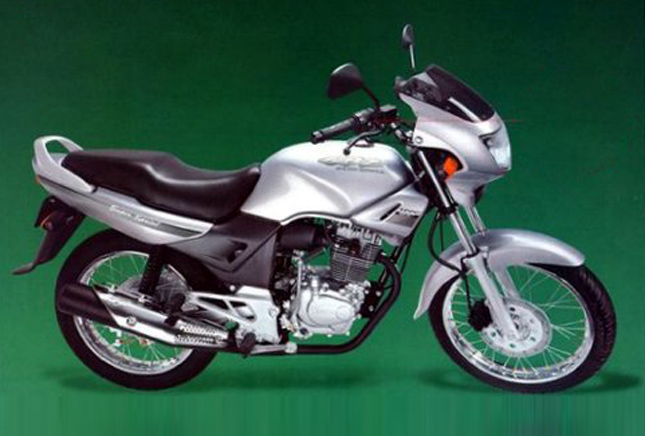 In our last article we left out an important bike, so we will start this segment by talking about that bike- The Hero Honda CBZ.
In our last article we left out an important bike, so we will start this segment by talking about that bike- The Hero Honda CBZ.1999:
Before going to 2009, we must take a step back to 1999 when the Hero Honda CBZ was launched. Pulsar series may have been the ones responsible for kick starting the motorcycling craze in India but its seed was first laid in the ground by CBZ 1999. The bike had no electric start, no pass light, no tubeless tires and no alloy wheels either. I am telling you this because we should always know where our roots are. We should always know where and how we started and how far we have come in just a span of 19 years.
Now, talking about the bike, it had a 156.8 cc engine producing 12.8 BHP of power @ 8000 RPM and 12.45 Nm of torque @ 6500 RPM, all this was coupled with a 5-speed gearbox. It even had 5 step adjustable rear shock absorbers, Hero maybe behind in the game now, but back in the day, they were really known for pushing the boundaries way up. The bike was a phenomenon and is still remembered as one.
2009:
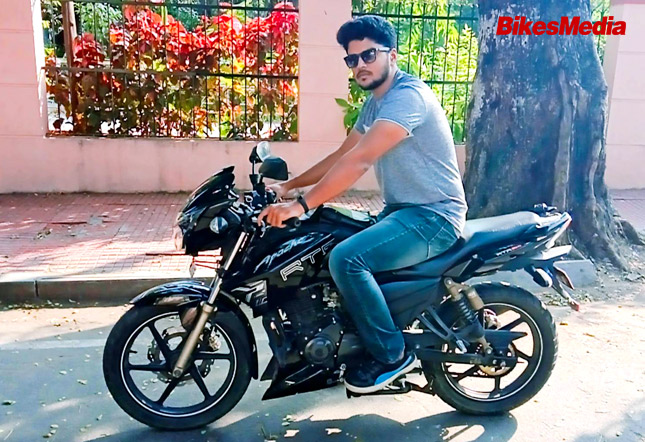 Two companies which never usually compete with each other, locked horns during this year. The companies were TVS and Royal Enfield. Both of these tried to push up the ceiling of bigger engine capacity motorcycle. While numbers fell a little short on the side of the TVS with their Apache RTR 180 but their lightweight performance machine did wonders in terms of on-road performance.
Two companies which never usually compete with each other, locked horns during this year. The companies were TVS and Royal Enfield. Both of these tried to push up the ceiling of bigger engine capacity motorcycle. While numbers fell a little short on the side of the TVS with their Apache RTR 180 but their lightweight performance machine did wonders in terms of on-road performance.The Apache RTR 180 was an almost perfect 180cc bike with a high power to weight ratio, instant throttle response and superb styling. Its engine produced 17 horses and 15.5 Nm of torque. Its habitual nuisance of always popping a wheelie proved it to be a game changer and a hit among the hooligans and performance hungry folks alike.
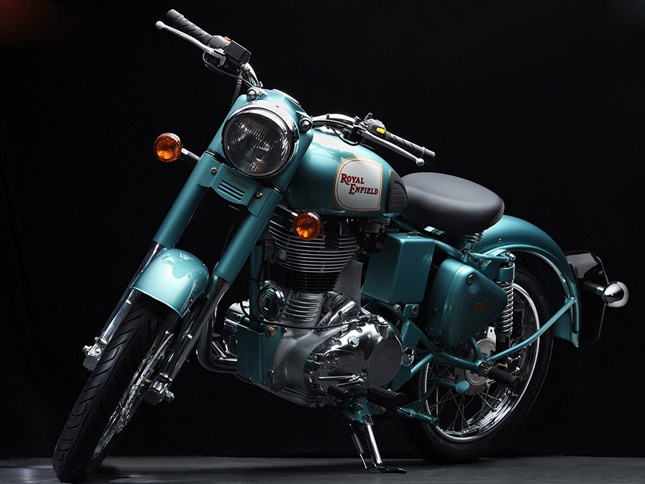 On the other side of the spectrum, we had Royal Enfield which gave us huge numbers in terms of RE Classic 350 and 500. Both of these bikes had top of the line torque available, really down the rev-range. They always succeeded in one thing only and that was pulling itself. The 28 Nm of torque on the 350 and the 44 Nm of torque on the Royal Enfield Classic 500, which also had an electronic fuel injection, made these bikes a champion of stop and go traffic. Unfortunately, that’s where the usability of these machines ended. Both of the bikes are really great city bikes but they are run out of breath out on the highway very quickly. Add this with unreliable components, unbearable vibrations and poor handling and you have a bike which is made for just one purpose, to pull.
On the other side of the spectrum, we had Royal Enfield which gave us huge numbers in terms of RE Classic 350 and 500. Both of these bikes had top of the line torque available, really down the rev-range. They always succeeded in one thing only and that was pulling itself. The 28 Nm of torque on the 350 and the 44 Nm of torque on the Royal Enfield Classic 500, which also had an electronic fuel injection, made these bikes a champion of stop and go traffic. Unfortunately, that’s where the usability of these machines ended. Both of the bikes are really great city bikes but they are run out of breath out on the highway very quickly. Add this with unreliable components, unbearable vibrations and poor handling and you have a bike which is made for just one purpose, to pull.2010:
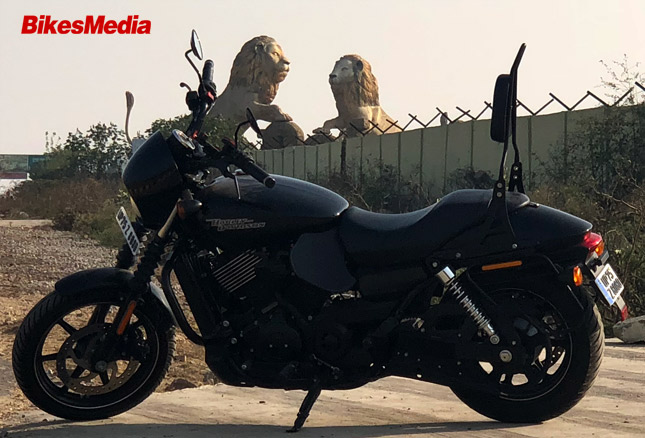 The screaming eagle enters India. This was the year when the American Motorcycling company, Harley Davidson officially invaded the Indian market. With their torque figures and American styled big cruisers, they became an alternative for anyone who wanted a big cruiser with actual highway performance. They came to the market with 12 new models, most notable with XR 1200X, FXDB Street Bob, Night Rod Special, Fat boy, and Road King. All these belonged to different categories like Tourers, Sportsters, Dyna, VRSC etc.
The screaming eagle enters India. This was the year when the American Motorcycling company, Harley Davidson officially invaded the Indian market. With their torque figures and American styled big cruisers, they became an alternative for anyone who wanted a big cruiser with actual highway performance. They came to the market with 12 new models, most notable with XR 1200X, FXDB Street Bob, Night Rod Special, Fat boy, and Road King. All these belonged to different categories like Tourers, Sportsters, Dyna, VRSC etc. It wouldn’t be until the launch of Street 750 when Harley starts selling in a respectable number in India but considering the market’s maturity during 2010, the company performed really well and also paved the way for other foreign motorcycling brands like Triumph, Ducati and others in India.
2011:
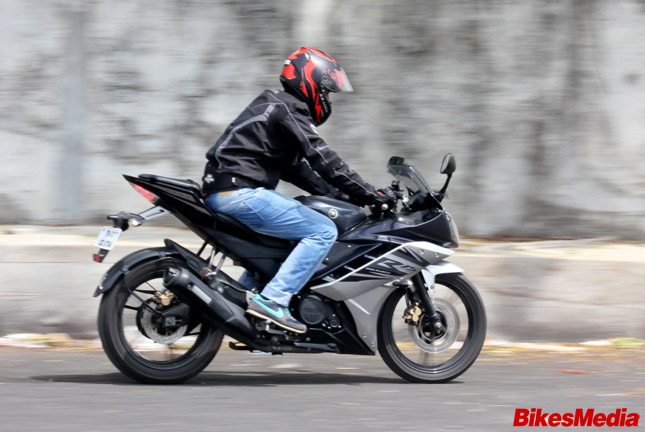 It was during this year when India got its share of fully faired bikes. Yamaha launched the YZF R15 Version 2.0, with proper racing ergonomics by incorporating the design cues from their bigger bikes like the R6 and R1. The second version’s success was so enormous and widespread, that it’d take 7 years before Yamaha would launch the third iteration of the R15. Over the years, R15 V2 will become the staple of perfection from which all other entry-level super sports bikes will be measured.
It was during this year when India got its share of fully faired bikes. Yamaha launched the YZF R15 Version 2.0, with proper racing ergonomics by incorporating the design cues from their bigger bikes like the R6 and R1. The second version’s success was so enormous and widespread, that it’d take 7 years before Yamaha would launch the third iteration of the R15. Over the years, R15 V2 will become the staple of perfection from which all other entry-level super sports bikes will be measured.
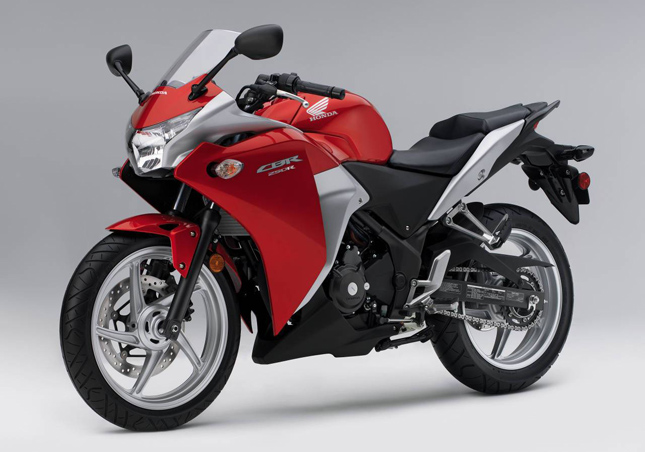 Next turn was Honda’s; they launched a sports tourer to fight against the Supersport which Yamaha was offering. The Honda CBR 250R was Honda’s flagship motorcycle in India at that time. It had 26 BHP of power and 22.9 NM of torque; all this was produced by a 250cc engine which was a high revving unit, which was paired with a 6-speed gearbox. For safety purposes, it had dual channel ABS on board and dual discs on both the wheels. The bike was all the rage when it first came to India but soon the market became crowded with cheaper and better options than CBR 250R, as a result, this bike got lost in the abyss and was discontinued sometime between 2016 and 2017.
Next turn was Honda’s; they launched a sports tourer to fight against the Supersport which Yamaha was offering. The Honda CBR 250R was Honda’s flagship motorcycle in India at that time. It had 26 BHP of power and 22.9 NM of torque; all this was produced by a 250cc engine which was a high revving unit, which was paired with a 6-speed gearbox. For safety purposes, it had dual channel ABS on board and dual discs on both the wheels. The bike was all the rage when it first came to India but soon the market became crowded with cheaper and better options than CBR 250R, as a result, this bike got lost in the abyss and was discontinued sometime between 2016 and 2017. It was also the year when TVS introduced dual channel ABS in the Apache RTR 180. TVS was the first Indian manufacturer to offer dual-channel ABS on their motorcycle and this established TVS’ Image in the Indian market as a performance-oriented motorcycling manufacturer.
2012:
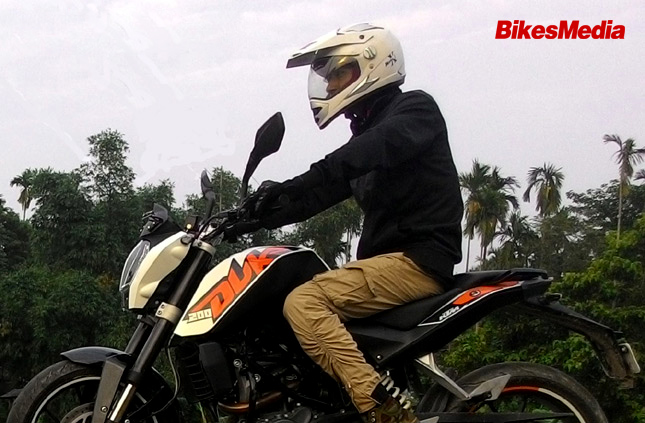 The timing was almost perfect, almost every company had launched their flagship motorcycle in the market and it was Bajaj’s turn to deliver something revolutionary. So the company collaborated with KTM and soon they became the best of buddies. While the KTM launched the Duke 200, Bajaj used KTM’s technology to develop the most advanced naked bike in the Indian market, the Pulsar NS 200, where NS stood for “Naked sports”.
The timing was almost perfect, almost every company had launched their flagship motorcycle in the market and it was Bajaj’s turn to deliver something revolutionary. So the company collaborated with KTM and soon they became the best of buddies. While the KTM launched the Duke 200, Bajaj used KTM’s technology to develop the most advanced naked bike in the Indian market, the Pulsar NS 200, where NS stood for “Naked sports”.
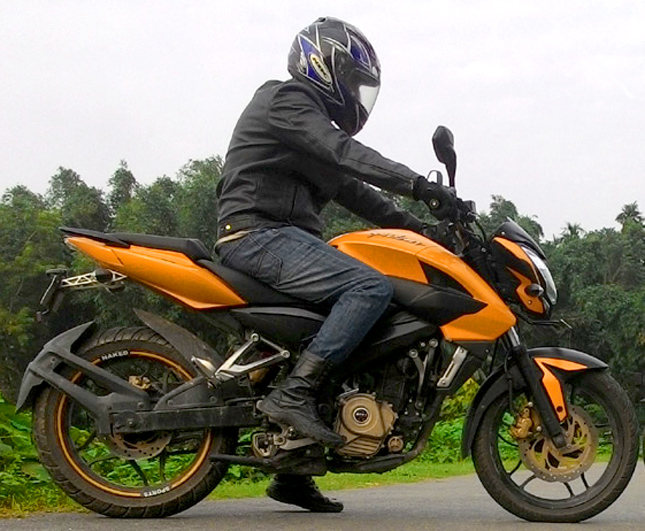 The bike was a huge step forward from the current generation Pulsars and featured the most advanced hardware in the market. It had a Perimeter frame, an underbelly exhaust, superb mass centralization and an amazing top end. It was the perfect stunt bike and soon gained a reputation for the same. But haunted by the success of its own sibling the Pulsar 220, the NS 200 was discontinued in 2016 and re-launched in 2017, since then it has been winning hearts of the masses all over again.
The bike was a huge step forward from the current generation Pulsars and featured the most advanced hardware in the market. It had a Perimeter frame, an underbelly exhaust, superb mass centralization and an amazing top end. It was the perfect stunt bike and soon gained a reputation for the same. But haunted by the success of its own sibling the Pulsar 220, the NS 200 was discontinued in 2016 and re-launched in 2017, since then it has been winning hearts of the masses all over again.2013:
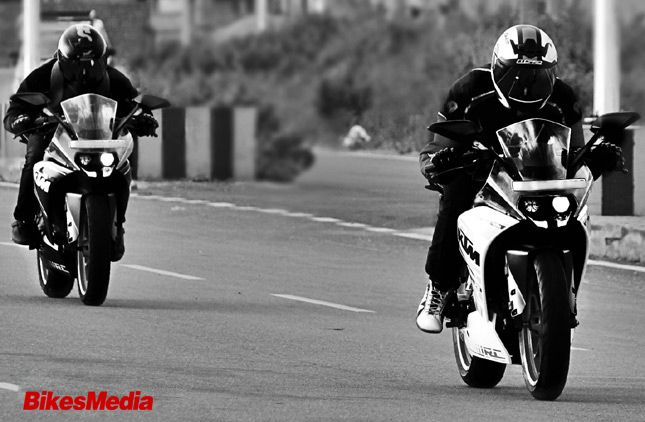 The KTM RC twins enter the Indian market and ushers in a new era of supersport motorcycles. Earlier it was only the R15 V2 which the only affordable sports motorcycle in India but with the coming of RC 200 and RC 390, the landscape totally changed. The KTM RC 200 offered a tamer rider as it could be controlled very easily, whereas RC 390 offered a high-performance package which was easily comparable to bigger capacity naked bikes. It accelerated to 100 km/h in under 5 seconds and had a top speed of 178 km/h which was electronically limited.
The KTM RC twins enter the Indian market and ushers in a new era of supersport motorcycles. Earlier it was only the R15 V2 which the only affordable sports motorcycle in India but with the coming of RC 200 and RC 390, the landscape totally changed. The KTM RC 200 offered a tamer rider as it could be controlled very easily, whereas RC 390 offered a high-performance package which was easily comparable to bigger capacity naked bikes. It accelerated to 100 km/h in under 5 seconds and had a top speed of 178 km/h which was electronically limited.2014:
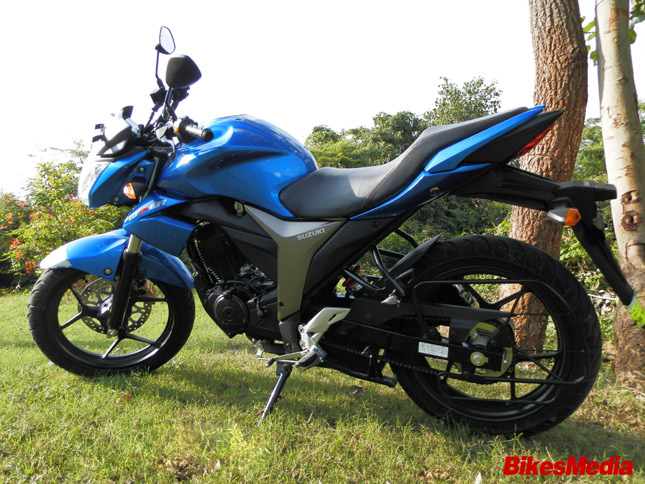 Suzuki could no longer handle the growth of Indian motorcycling market, just by sitting on the sideline and not cashing in on it. Enter the Suzuki Gixxer, which was supposed to be a smaller cousin of the big GSX-R family and the answer of Yamaha FZ 2.0. The bike made Suzuki relevant in the Indian market and gave the public another street fighter to choose from besides Yamaha FZ 2.0. With a class-leading instrument console, lightweight chassis, peppy engine and a musical exhaust note, Gixxer tore it’s way up the ladder. It spawned several of its cousins in the process, including the Suzuki Gixxer SF, and Suzuki Intruder.
Suzuki could no longer handle the growth of Indian motorcycling market, just by sitting on the sideline and not cashing in on it. Enter the Suzuki Gixxer, which was supposed to be a smaller cousin of the big GSX-R family and the answer of Yamaha FZ 2.0. The bike made Suzuki relevant in the Indian market and gave the public another street fighter to choose from besides Yamaha FZ 2.0. With a class-leading instrument console, lightweight chassis, peppy engine and a musical exhaust note, Gixxer tore it’s way up the ladder. It spawned several of its cousins in the process, including the Suzuki Gixxer SF, and Suzuki Intruder. 2015:
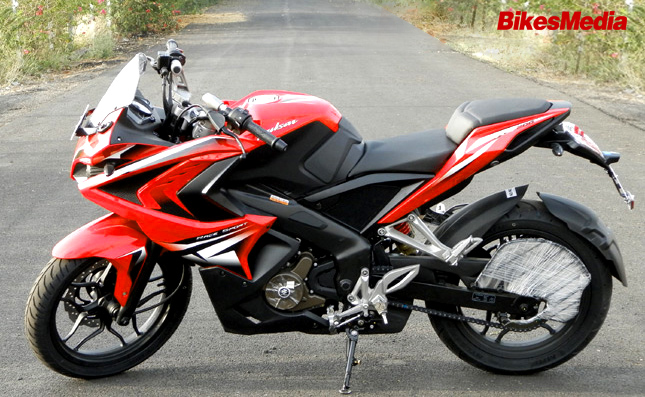 The crown of the fastest Indian was up for grabs and people knew what was coming. Bajaj launched the first fully faired and probably the fastest Pulsar, the RS 200. Then the problem began, the design of the bike was a love-it or hate it affair. The busy sticker styling, the massive front fairing and the controversially designed rear tail light, made for some really interesting debates among the fans. Still, bike continued to sell because of its performance. The engine was a fuel injected 200 cc triple spark unit which could easily scream its way up to 150 km/h. The bike received a much-needed update in the later years, which made its design more subtle and less loud.
The crown of the fastest Indian was up for grabs and people knew what was coming. Bajaj launched the first fully faired and probably the fastest Pulsar, the RS 200. Then the problem began, the design of the bike was a love-it or hate it affair. The busy sticker styling, the massive front fairing and the controversially designed rear tail light, made for some really interesting debates among the fans. Still, bike continued to sell because of its performance. The engine was a fuel injected 200 cc triple spark unit which could easily scream its way up to 150 km/h. The bike received a much-needed update in the later years, which made its design more subtle and less loud.2016:
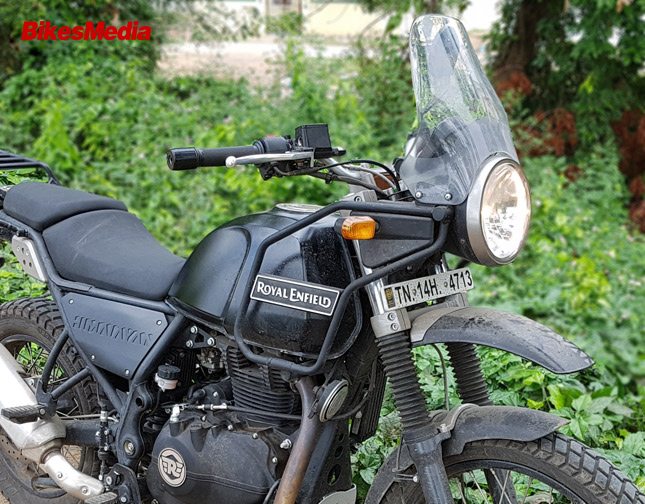 Royal Enfield, probably tired of the lack of innovation on their end, decided to launch India’s first proper adventure Bike, The Himalayan. It had a bare bone design, long travel suspension, a counterbalanced LS 400 cc engine and a fully loaded instrument cluster. The ride quality of the Royal Enfield Himalayan was leaps ahead from any Royal Enfield motorcycle as the engine didn’t shell out many vibrations and the long travel suspension took care of all the potholes. The quality of bike’s component was an issue as it started falling apart and getting easily damaged on a bike which is supposed to be sturdy and strong. Royal Enfield realized their mistake and re-launched the Himalayan again in 2017 with an Electronic fuel injection and better quality parts.
Royal Enfield, probably tired of the lack of innovation on their end, decided to launch India’s first proper adventure Bike, The Himalayan. It had a bare bone design, long travel suspension, a counterbalanced LS 400 cc engine and a fully loaded instrument cluster. The ride quality of the Royal Enfield Himalayan was leaps ahead from any Royal Enfield motorcycle as the engine didn’t shell out many vibrations and the long travel suspension took care of all the potholes. The quality of bike’s component was an issue as it started falling apart and getting easily damaged on a bike which is supposed to be sturdy and strong. Royal Enfield realized their mistake and re-launched the Himalayan again in 2017 with an Electronic fuel injection and better quality parts. 2017:
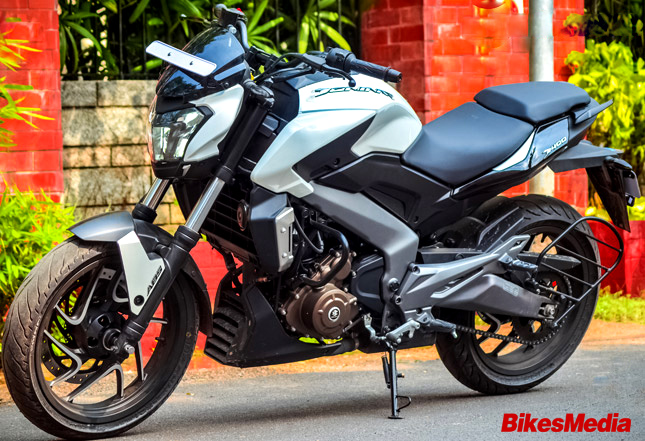 It was easily the year of the Bajaj Dominar 400. Bajaj raised the possibilities of what was possible on an Indian made bike. Dominar 400 has a 375 cc liquid cooled fuel injected engine which produced 35 BHP of power and 35 NM of torque. It had twin channel ABS, Slipper Clutch, comfortable seating position, and rear monoshock suspension for a smooth long ride. Bike’s original credentials got lost in the fight between Royal Enfield and Bajaj but at the end of the day, Dominar 400 stands out as the most Value for money bike out there.
It was easily the year of the Bajaj Dominar 400. Bajaj raised the possibilities of what was possible on an Indian made bike. Dominar 400 has a 375 cc liquid cooled fuel injected engine which produced 35 BHP of power and 35 NM of torque. It had twin channel ABS, Slipper Clutch, comfortable seating position, and rear monoshock suspension for a smooth long ride. Bike’s original credentials got lost in the fight between Royal Enfield and Bajaj but at the end of the day, Dominar 400 stands out as the most Value for money bike out there.
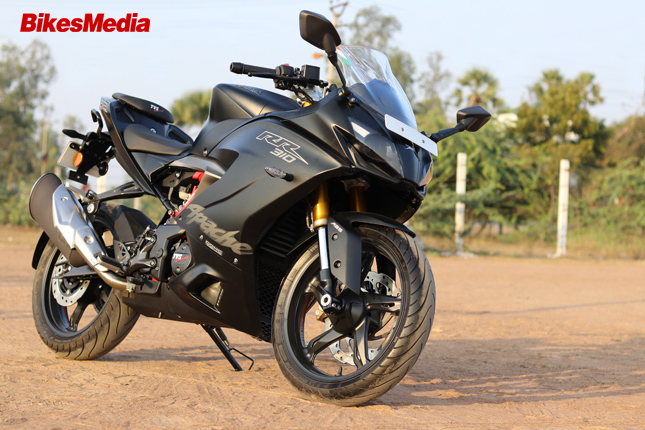 Another bike which exceeded everyone’s expectations was Apache RR 310S. This bike’s launch roared across the globe as websites like Motorcycle.com and many other foreign media companies were taking in the notice, the marvel of Indian Engineering. Reading the brochure of Apache RR 310S was nothing short of poetry for a petrol head. The reverse inclined 310 cc liquid cooled fuel injected engine was an absolute performer
Another bike which exceeded everyone’s expectations was Apache RR 310S. This bike’s launch roared across the globe as websites like Motorcycle.com and many other foreign media companies were taking in the notice, the marvel of Indian Engineering. Reading the brochure of Apache RR 310S was nothing short of poetry for a petrol head. The reverse inclined 310 cc liquid cooled fuel injected engine was an absolute performer 2018:
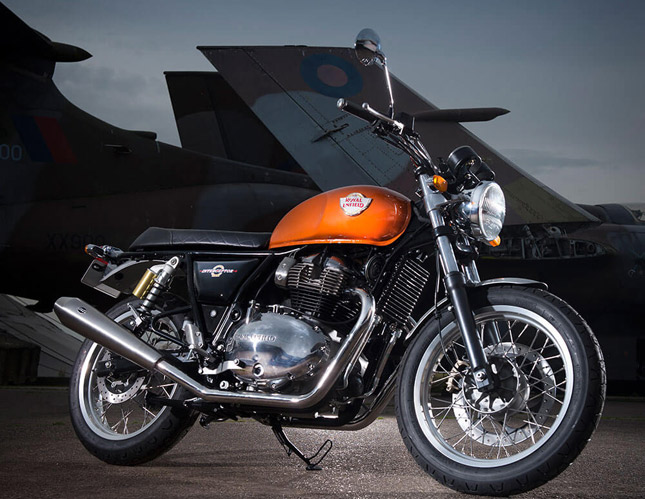 This year is definitely the year of Royal Enfield Interceptor 650 and Continental GT 650. Both of these bikes are from Royal Enfield’s stable. They will be the most powerful Royal Enfield made motorcycles and are sure to cause a big wave in the international motorcycle market as well.
This year is definitely the year of Royal Enfield Interceptor 650 and Continental GT 650. Both of these bikes are from Royal Enfield’s stable. They will be the most powerful Royal Enfield made motorcycles and are sure to cause a big wave in the international motorcycle market as well. That’s it for the important years in the Indian motorcycling history. I am sure that I have left out many motorcycles, but hey, do let us know about those bikes in the comment section below as that’s going to be a story for another time. For everything else related to motorcycles, stay tuned to BikesMedia.
By: Yetnesh Dubey











